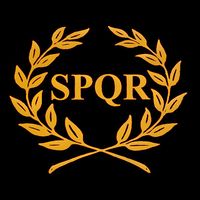Aedes Fortunae Huiusce Diei
From NovaRoma
(Difference between revisions)
(add pics) |
(add detail) |
||
| Line 5: | Line 5: | ||
'''Aedes [[Fortuna]]e Huiusce Diei''', (Fortune of This Day), a circular temple with six columns remaining, was built by Quintus Lutatius Catulus in 101 BCE to celebrate his victory over Cimbri. The colossal statue found during excavations and now kept in the Capitoline Museums was the statue of the [[Fortuna|goddess]] herself. Only the head, the arms, and the legs were of marble: the other parts, covered by the dress, were of bronze. | '''Aedes [[Fortuna]]e Huiusce Diei''', (Fortune of This Day), a circular temple with six columns remaining, was built by Quintus Lutatius Catulus in 101 BCE to celebrate his victory over Cimbri. The colossal statue found during excavations and now kept in the Capitoline Museums was the statue of the [[Fortuna|goddess]] herself. Only the head, the arms, and the legs were of marble: the other parts, covered by the dress, were of bronze. | ||
| + | |||
| + | Originally there was a small, cylindrical ''[[cella]]'' surrounded by free columns. Later, the cella was demolished and the intercolumnar spaces were filled, creating a new, larger cella. Remains of the fill can be seen today. | ||
Revision as of 04:43, 19 October 2006
Home| Latíné | Deutsch | Español | Français | Italiano | Magyar | Português | Română | Русский | English
Aedes Fortunae Huiusce Diei, (Fortune of This Day), a circular temple with six columns remaining, was built by Quintus Lutatius Catulus in 101 BCE to celebrate his victory over Cimbri. The colossal statue found during excavations and now kept in the Capitoline Museums was the statue of the goddess herself. Only the head, the arms, and the legs were of marble: the other parts, covered by the dress, were of bronze.
Originally there was a small, cylindrical cella surrounded by free columns. Later, the cella was demolished and the intercolumnar spaces were filled, creating a new, larger cella. Remains of the fill can be seen today.
File:Aedes Fortunae Huiusce Diei view02 agricola.jpg
Front view showing altar
File:Aedes Fortunae Huiusce Diei detail Agricola.jpg
Detail: Pavement level was raised in antiquity
